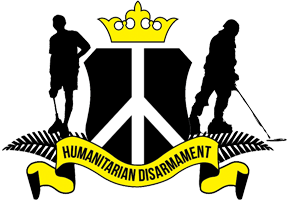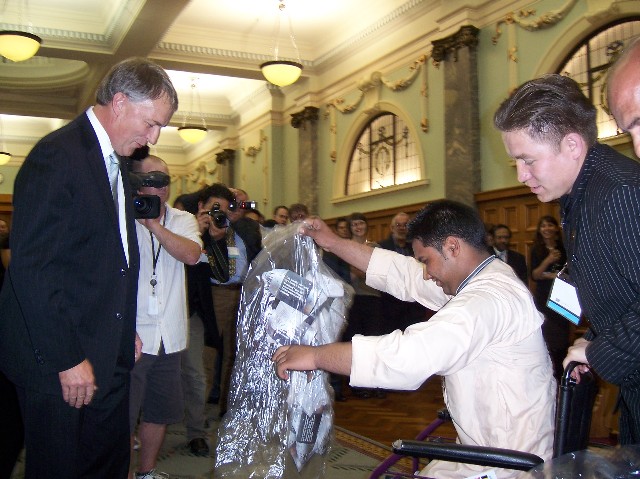Chronology of significant advances in humanitarian disarmament to protect civilians in armed conflict
2017 Treaty on the Prohibition of Nuclear Weapons
The Treaty on the Prohibition of Nuclear Weapons was adopted on 7 July 2017 at the United Nations in New York by 122 nations. Opened for signature on 20 September, the treaty categorically bans nuclear weapons and requires remedial measures, including victim assistance. The process to create the treaty began in March 2013, when 127 states met in Oslo to consider the catastrophic humanitarian impact of nuclear weapons. The treaty entered into force on 22 January 2021, 90 days after receiving its 50th ratification. The International Campaign to Abolish Nuclear Weapons (ICAN) won the 2017 Nobel Peace Prize for its work to bring about the ban treaty.
2013 Arms Trade Treaty
The Arms Trade Treaty was adopted on 2 April 2013 at UN headquarters in New York by a UN General Assembly vote of 155 in favor, 3 opposed, and 23 abstentions. It establishes strict criteria for countries to apply in decisions authorizing the cross-border transfers of arms, including risks that weapons would be used to commit acts of terrorism, violations of human rights and international humanitarian law, and other offenses. The Arms Trade Treaty opened for signature on 3 June 2013 and entered into force on 24 December 2014, 90 days after receiving its 50th ratification.
2008 Convention on Cluster Munitions
The Convention on Cluster Munitions was adopted on 30 May 2008 in Dublin, Ireland by 107 states after less than three weeks of negotiations and three months after the Wellington Conference on Cluster Munitions in February 2008. The treaty comprehensively prohibits cluster munitions and requires clearance of cluster munition remnants, destruction of stockpiles, clearance of contaminated land and victim assistance. The treaty opened for signature in Oslo, Norway on 3 December 2008 and entered into force on 1 August 2010, six months after its 30th ratification. The Cluster Munition Coalition of non-governmental organizations working to end unacceptable harm from these weapons received the 2008 Tipperary Peace Prize.
1997 Mine Ban Treaty
The Mine Ban Treaty was adopted on 18 September in Oslo, Norway by 91 states and opened for signature in Ottawa, Canada on 3 December. The treaty comprehensively prohibits antipersonnel landmines, requires destruction of stockpiles, clearance of affected land and assistance to victims of the weapons. It entered into force on 1 March 1999, six months after its 40th ratification. The International Campaign to Ban Landmines and Jody Williams received the 1997 Nobel Peace Prize for starting “a process which in the space of a few years changed a ban on anti-personnel mines from a vision to a feasible reality.”
1995 Blinding Lasers Protocol
At the First Review Conference of the Convention on Conventional Weapons, states adopted Protocol IV preemptively banning blinding laser weapons.
1993 Chemical Weapons Convention
The Chemical Weapons Convention opened for signature on 13 January 1993 in Paris, France, after it was approved by the UN General Assembly one year earlier. The convention entered into force on 29 April 1997, 180 days after receiving its 65th ratification. The Organisation for the Prohibition of Chemical Weapons (OPCW) in the Hague serves as the convention’s implementing body and received the 2013 Nobel Peace Prize “for its extensive efforts to eliminate chemical weapons.”

